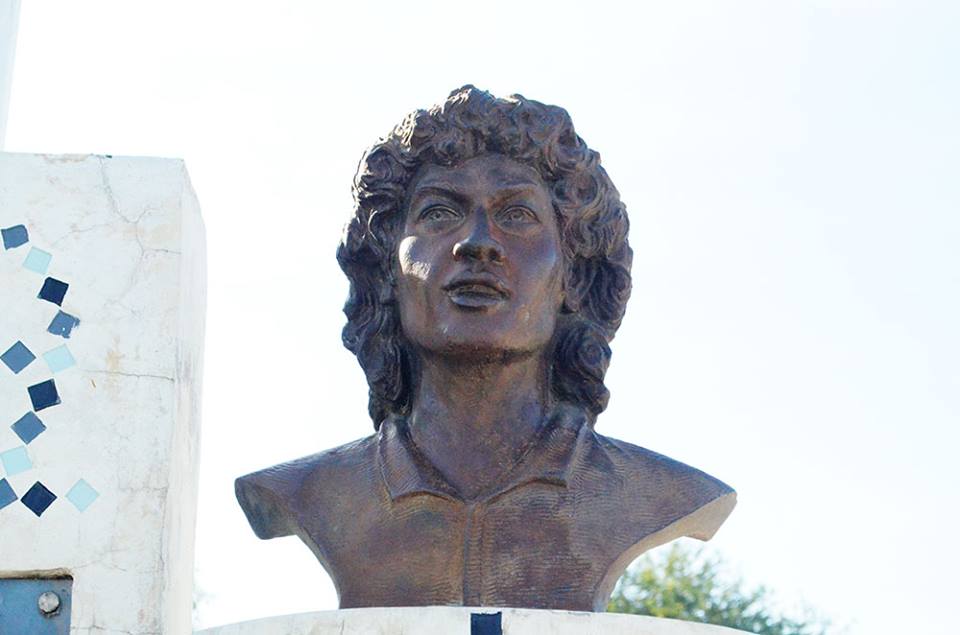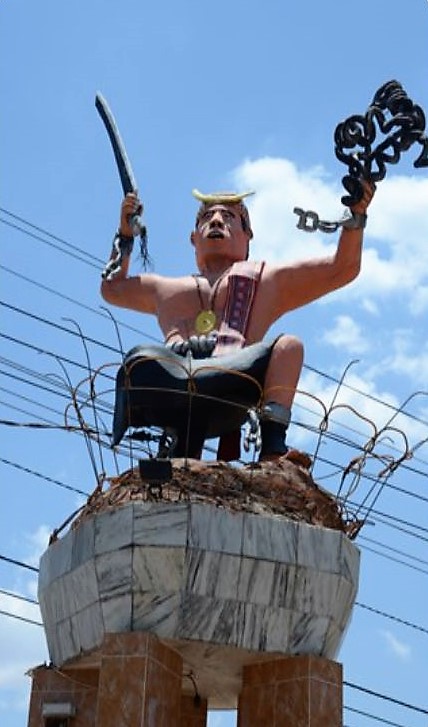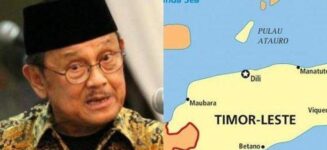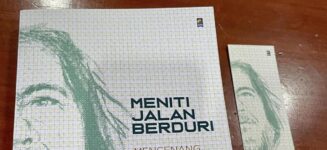Unpublished note – Jan. 6, 2013.
Amid optimism and challenge to stand on its own as the United Nations troops are leaving the country by the New Year, reports on last year 21st anniversarry of Nov. 12 St. Cruz massacre in Dili, Timor Leste, remind the nation of its bitter past and national awakening.
Since every nation needs its own historiography whatever its past experience will be an important legacy for the nation’s future. The country’s tragic past is well reflected by relics, memorials, and memory of the contemporaries. Historic monuments, buildings and memorials, however, may shape “difficult memories” for the East Timorese to conceptualize nation-building, one researcher has warned. For, apart from its sacred house, the uma lulik, the rest of the structures are a mixture of various origins.
Since buildings and memorials come from different sources, Michael Leach suggests, they will need a re-interpretation of three layers of cultural heritage: the Portuguese colonialism (1512-1975), the Indonesian one (1975-1999) and the post-1999 transition and independence. The two colonialisms will lead to different perceptions linked to inter-generational tensions with political and linguistic dimensions. Timor Leste, he argues, will need “a socially cohesive ‘national’ political community” to be formed and reproduced on the bases of a “unifying sense of national identity”.
One type of memorials, the liurai (Timor warrior) statues, seems to me most symbolic. The statues of about 2,5 mtr high stand on pedestals of 2 to 3 mtr. Built by Indonesia in three most important towns, Dili, Baucau and Maliana, they have been preserved and rebuilt as Timor Leste’s national symbol of patriotism.
Seen from Indonesian perspective, however, they are originally intended to glorify “integration”. But the form and spirit of liberation expressed there, ironicaly but not incidentally, resemble the monuments in Jakarta, which were built to celebrate Indonesian struggle to recover West Papua from the Dutch in the 1960s.
Above all, it physically manifests the spirit of sacred local hero of martial arts, which includes the traditional soul of local machoism-cum-jingoism known as jagoism (from ‘jago’, fighting cock).
Framed thus within national and local values, the statues highlight Indonesia’s strategic objective of ‘integration’ in the wake of Portuguese Carnation Revolution in 1974. The annexation campaign not only used Cold War rhetoric, but in a mixture of patriotism and jingoism, it capitalized on Indonesia’s anti neo-colonialism and imperialism – a spirit Sukarno strongly built in the 1960s.
Hence, anti Western-colonialism theme was fully utilized by Suharto’s soldiers on the ground and became the leitmotif, a pretex if you will, to recruit local alies (the Apodeti and landlords), militias and hansip (civil defense). Witnesses – i.e. Gen. Moertopo’s former ally, Jose Martins III – testified they were encouraged to embrace the idea of ‘anti (i.e. Western) colonialism brotherhood’. It underpinned the very justification (they used) to annex Portuguese Timor.
It also marked the apparent ambitious, if somewhat megalomaniac, spirit of the ‘Archipelagic State’ (Wawasan Nusantara) concept developed by the military elite. Just a decade earlier, in the 1960s, when Indonesia conquered Dutch New-Guinea (now Papua), Gen. Ali Moertopo actually raised the idea of subsequently conquering East Timor as well.
The tiny Portuguese colony was, in his words, “like itching your armpit”. It’s a strange odd, that is, that need to be ‘corrected’. His close ally Jusuf Wanandi claimed in his memoir “Shades of Grey” (2012) that the incorporation of East Timor was “initially” to be modelled on Papua “plebiscite”. Moertopo’s idea was rejected by Gen. Suharto, who led the military operation on Papua in 1963 and Wanandi’s Papua-style “plebiscite” for East Timor, a decade later, was never materialized.
They were not in vain, though. For, during 1974-1975 the Opsus intelligence operation led by Moertopo’s men, Benny Moerdani and Dading Kalbuadi actually succeeded – like in Papua 1969 ‘plebiscite’ – to mobilize local chiefs and groupings loyal to the Army, who were instrumental to destabilize the country as civil war erupted in Dili by mid-1975.
What Moertopo cum suis dreamt in the 1960s thus shaped the pre-conditions for war and take-over of Portuguese Timor. By late Nov., however, when Fretilin declared independence, the Opsus was surprised and turned in disarray. Pressed by his generals, Suharto turned a blind eye when some generals – ‘secretly’ internally – enacted the invasion. The decision, which he later informed the visiting U.S. President G. Ford and Henry Kissinger, inevitably changed the divide-and-rule intelligence campaign – which Dading called “Lawrence of Arabia method” – into a full-scale imperialistic war of occupation.
It’s this – Gen. Moertopo’s ‘Great Indonesia’ adventure – that basically constitutes the Papua-Timor link embedded in the warrior memorials. A decade later, in the early 1980s, Captain Prabowo Subianto – who later founded a political party pointedly named ‘Gerindra’ (Great Indonesia Movement) – was also imbued by and used similar idea of greatness and ‘brotherhood’ when he recruited locals soldiers to consolidate the ‘Timorization’ of Indonesia’s Timor war.
Today, East Timorese are keen to remember their past, but hatred has never been universal: it seems specifically directed against the ABRI (Indonesian military), not against Indonesians. While most monuments are preserved or rebuilt, the few structures I have seen being destructed seem likely the consequences of their most traumatic experience – such as the Pancasila (Indonesia’s state ideology) monument built by the Army in Viqueque. Like Baucau, after all, Viqueque was Timor Leste’s Surabaya – Indonesia’s heroic city of 1945 where freedom fighters fought fiercely against the invading foreign troops.
In that same district of Viqueque the locals I met last April kept fresh memory of Craras massacre (1983) and told me in bitter tone they saw two close aides of Captain Prabowo Subianto leading the killings of all male villagers in a retaliation onslaught. A number of cemeteries in the district, designed as special memorials, are dedicated to commemorate the bloodbath. Indeed, the Craras massacre was among the greatest atrocities inflicted by the Indonesian Army in Timor Leste.
Monuments, big and small, are important to keep memories vivid and alive. A memorial at the skirt of Manatuto for example reminds its visitors: “(Here) Herman was shot dead by ABRI”. Atrocity sites-turned monuments are now found in the rebuilt churches of Liquica, Suai, in the Balibo house-of-journo’s-killings, Dili’s Comarca prison, in St. Cruz cemetery and many more. As time went on, structures, buildings, sites, personal interactions amid suffering and struggle, but also mass media (though scarcely developed in the 1970) are particularly significant for people to imagine the ties that bind them.
Museums on the nation’s struggle and on torture at the former Comarca Prison in Dili now offer the most complete historic panorama of the tragic journey of the nation. With the exception of the Mateneiro Hero Cemetery, however, no special memorial has apparently been built to commemorate Falintil guerilla struggle and massive de-population, war and hunger that occured in the wake of Indonesia’s military campaign in the Matebian and Ramelau regions in the late-1970s. Which had caused most of 180 thousands deaths and suffering – and arguably led to the awakening of Timor Leste nationhood.
The massive humanitarian disaster made the country a land of graveyards. Today you will find cemeteries scattered along the main roads where many were buried under the same beautifully colored stones indicating that they were probably killed, or found death, at the same spot and thus buried together. Often it was just stones marking the killing site, where families reguarly come to lite candles and pray. The state now plans to subsidise memorials to help survivor families’ rebury victims bones.
Grass roots perceptions born out of grass roots historic experience are significant. How they framed their memories will have to be articulated in the discourse, which will evolve to strengthen nation-building.
Meanwhile, call for public discourse on Timor Leste historiography may also need Indonesia’s official sources. For, no contradiction is more profound within the Timor Leste society other than the fact that while the country and the people have never been part of Indonesia’s nation-building, they had been at the same time enforced onto the archipelagic state-building by costly “integrasi” (integration) programs. Hence, Indonesia could in theory uniquely contribute invaluable materials to its former colony’s historiography if and when its archives are made available.
However, so far Indonesia even refused to provide the remains of Timor Leste national hero Nicolau Lobato, an important symbol for the new nation, despite several diplomatic requests. Most Indonesians were in fact rather ignorant on Timor Leste – partly because of Suharto’s New Order secrecy on Timor war, partly – as is common with former colonial rulers – also because of perceived “lost” of ‘patria’. The historic Nov. 12, 1991 St. Cruz massacre that opened the eyes of the world, The Jakarta Post (Nov. 13) reports, “was just one date in R.I. history”.

If ‘Tim-Tim’ (Indonesia’s East Timor occupation epithet) is for Jakarta officially a closed chapter, some generals have privately written books on East Timor, yet they tend to be built on patriotism and self aggrandizement while blaming the U.S. for pushing Indonesia to take over East Timor and the world for supporting the pro-independence groups. State discretion and denial will only repress historical reality.

Most painful to many, perhaps, is the fact that the Truth & Friendship Commission, CTF (2008), has committed both Indonesia and Timor Leste to let impunity continue even when the joint agreement explicitly blamed the Indonesian military for much of the crimes against humanity throughout years of war and occupation – thus, leaving the issues to non-governmental organizations without credible international support.
Yet, with huge data of thousands of testimonies collected by the internationally sponsored CAVR (Commission for Reception, Truth and Reconciliation) processes and protected by the constitution, Timor Leste has found ‘truth’ needed to eradicate stigma’s and compensate victims as well as contributing rich materials for a historiography of genocide. That’s what Indonesia can learn from, and where Timor Leste can heal pains and utilize past materials.
Preserving memorials and memorabilia is one way to go. With the growing economy and stability sustained, resolving troublesome memories will mark Timor Leste’s new journey beyond the pains – without forgetting the past, that is.
@ This article is part of the author’s reports based on his research in Timor Leste last April. A former journalist with Radio Netherlands , he covered Timor Leste extensively throughout the 1990s.



